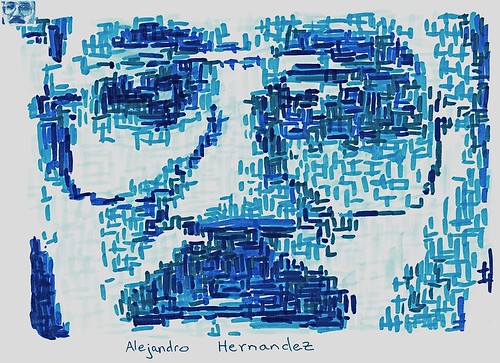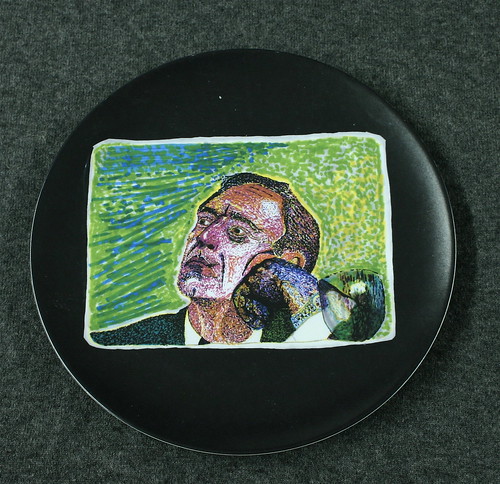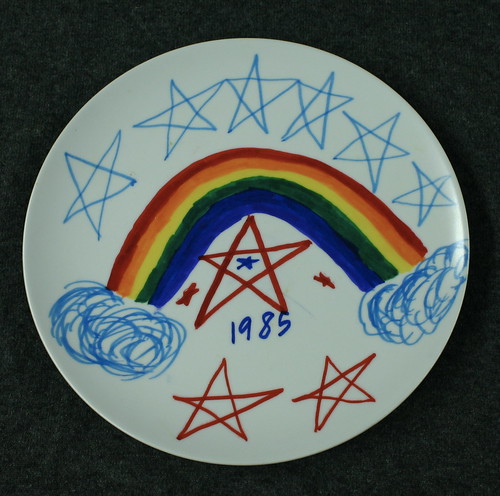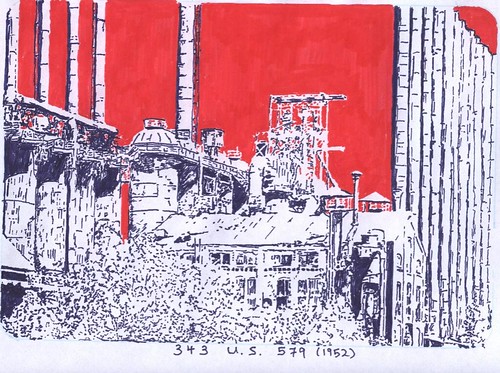Wednesday, December 2, 2009
Thursday, January 29, 2009
Equal Protection-- Gender Equality
 One of the great pleasures of my job (judicial clerk) is stumbling across odd cases. Yesterday, a colleague called my attention to State v. Hunter, 208 Or 282 (1956), in which the Oregon Supreme Court said that it was constitutional for the state legislature to ban woman's boxing and wrestling. Here is the money quote from the opinion.
One of the great pleasures of my job (judicial clerk) is stumbling across odd cases. Yesterday, a colleague called my attention to State v. Hunter, 208 Or 282 (1956), in which the Oregon Supreme Court said that it was constitutional for the state legislature to ban woman's boxing and wrestling. Here is the money quote from the opinion.In addition to the protection of the public health, morals, safety, and welfare, what other considerations might have entered the legislative mind in enacting the statute in question? We believe that we are justified in taking judicial notice of the fact that the membership of the legislative assembly which enacted this statute was predominately masculine. That fact is important in determining what the legislature might have had in mind with respect to this particular statute, in addition to its concern for the public weal. It seems to us that its purpose, although somewhat selfish in nature, stands out in the statute like a sore thumb. Obviously it intended that there should be at least one island on the sea of life reserved for man that would be impregnable to the assault of woman. It had watched her emerge from long tresses and demure ways to bobbed hair and almost complete sophistication; from a creature needing and depending upon the protection and chivalry of man to one asserting complete independence. She had already invaded practically every activity formerly considered suitable and appropriate for men only. In the field of sports she had taken up, among other games, baseball, basketball, golf, bowling, hockey, long distance swimming, and racing, in all of which she had become more or less proficient, and in some had excelled. In the business and industrial fields as an employe or as an executive, in the professions, in politics, as well as in almost every other line of human endeavor, she had matched her wits and prowess with those of mere man, and, we are frank to concede, in many instances had outdone him. In these circumstances, is it any wonder that the legislative assembly took advantage of the police power of the state in its decision to halt this ever-increasing feminine encroachment upon what for ages had been considered strictly as manly arts and privileges? Was the Act an unjust and unconstitutional discrimination against woman? Have her civil or political rights been unconstitutionally denied her? Under the circumstances, we think not.
Tuesday, January 27, 2009
The Exonerated-- False Confessions

One of the factors that led to my decision to become a lawyer was a long-standing fear of going to prison for a crime that I did not commit. I am not sure, but my guess is that many people have this fear. It is an irrational stand-in for the very rational preoccupation with the contingency of life. We are all but one chain of events from extreme misfortune. Though being a lawyer does take out some of the bite out of this particular manifestation of that concern, the fear is still there.
In part, as a response to that fear, I have been working on a series of plates depicting persons who falsely confessed to their crimes. The subject matter also appealed to me because conviction-- and, one presumes, execution-- of the innocent turns notions of justice completely on its head, implicating us all in the complete devastation of actual people.
Alejandro Hernandez, depicted here, confessed to murder and a number of sex-related crimes. He served over ten years on death row in Illinois, before his attorneys were able to prove that he could not have done the crimes he was convicted of. The lead attorney in the post-conviction proceedings in which he ultimately won his freedom was the novelist, Scott Turow. Turow, writes about the case in a short book on the death penalty, Ultimate Punishment.
I have done about seven different plates depicting exonerated persons. To make the drawings, I blow up low resolution pictures of people, then work from the pixelated images. On one level, the idea is that the large pixels become reminiscent of DNA; but more than that, I like the optical effect. On the best plates from the series, the face only emerges from a certain distance; closer in, the image dissolves into a collection of abstract hatch marks.
I still have not decided what do with the plates. I don't feel comfortable trying to profit from them. I think that they could be used effectively for fund-raising but have not invested the time necessary to get that ball rolling.
Monday, January 26, 2009
Eleanor Roosevelt
Sunday, January 25, 2009
Martha Washington
 I think Martha Washington is next. Is it me or does she bear a more than passing resemblance to her husband, George?
I think Martha Washington is next. Is it me or does she bear a more than passing resemblance to her husband, George?
Bad hands
 This is the plate I did of Samuel Alito, and is one of the first I made ever. I started with the face and was pleased to capture a hint of the paradoxical combination of boredom and vigilance that often marks his expression. (Though I am not sure the drawing really looks like him...). Then I got to that hand and really struggled to find the creases.
This is the plate I did of Samuel Alito, and is one of the first I made ever. I started with the face and was pleased to capture a hint of the paradoxical combination of boredom and vigilance that often marks his expression. (Though I am not sure the drawing really looks like him...). Then I got to that hand and really struggled to find the creases. My friend, Liz, who spent a significant portion of her teenage years drawing nothing but hands and feet, gave me advise along the way, but to no avail. That part of the drawing got completely muddy; the hand itself looks like it was recently stung by a bee. And, as I have yammered about before,with markers there is no way to make the drawing lighter. So the pictured got darker and darker as I labored to find the right lines.
I have been drawing consistently for about a year and half now; hands are still difficult. One false move and you end up with something that looks like it should be in the Simpsons. Sometimes, I will lose count on the number of folds that a given digit has.
Saturday, January 24, 2009
Eleanor Roosevelt
Mary Todd Lincoln
Mary Todd Lincoln

Here is Mary Todd Lincoln. There are a couple of places I'd love to do over again (lower hand; bosom), but generally I am pleased.
I don't know if I captured the strangeness of the dress. It's very severe- on the elbows, the pleats protrude like plate armor. It was almost certainly designed by Elizabeth Keckly.
Keckly was the leading D.C. seamstress of the the day, designing gowns for Mary Anne Randolph Custis Lee (wife of Robert E.) and Varina Davis (wife of Jefferson). She had been born a slave and managed to purchase her own freedom.
During the White House years, Keckly was Mary Todd Lincoln's only seamstress and also one of the first lady's closest confidantes. They remained so, until 1868, when Keckly published a tell-all autobiography, Behind the Scenes, or, Thirty years a slave, and four years in the White House. After that, Mrs. Lincoln called her "Slick Lizzy".
Labels:
Elizabeth Keckly,
First Ladies,
Mary Todd Lincoln,
Slick Lizzy
Friday, January 23, 2009
Mary Todd Lincoln
Thursday, January 22, 2009
Rosa's Childhood Plates


 These are examples of plates that my wife, Rosa made when she was a kid (Full disclosure: As I began to write this entry Rosa informed that the 1985 entry was actually done by her cousin, Peter). The fact that more than twenty years later, people were still using them was very pleasing to me and big part of what drew me to the medium.
These are examples of plates that my wife, Rosa made when she was a kid (Full disclosure: As I began to write this entry Rosa informed that the 1985 entry was actually done by her cousin, Peter). The fact that more than twenty years later, people were still using them was very pleasing to me and big part of what drew me to the medium.
Wednesday, January 21, 2009
Equal Protection-- Gender Equality
 I have agreed to do a series of plates for the Oregon Women Lawyers annual auction. This image is of the "Honk-N-Holler" in Stillwater, Oklahoma. The owner of the establishment sued to challenge a state law that set the age for the purchase of "nonintoxicating" beer for women at eighteen and at twenty-one for men. The case, Craig v. Boren established a higher level of scrutiny for evaluating the constitutionality of laws that treat men and women differently.
I have agreed to do a series of plates for the Oregon Women Lawyers annual auction. This image is of the "Honk-N-Holler" in Stillwater, Oklahoma. The owner of the establishment sued to challenge a state law that set the age for the purchase of "nonintoxicating" beer for women at eighteen and at twenty-one for men. The case, Craig v. Boren established a higher level of scrutiny for evaluating the constitutionality of laws that treat men and women differently.
Tuesday, January 20, 2009
Executive Power
 There is no question that the power of the President expanded radically during the twentieth century. Most of this had to do with the increased importance of administrative agencies. Just where the limits to presidential power are, is somewhat murky as there is very little case law on the matter. As Justice Jackson, who writes as if he learned to speak by reading Shakespeare put it, one
There is no question that the power of the President expanded radically during the twentieth century. Most of this had to do with the increased importance of administrative agencies. Just where the limits to presidential power are, is somewhat murky as there is very little case law on the matter. As Justice Jackson, who writes as if he learned to speak by reading Shakespeare put it, one"may be surprised at the poverty of really useful and unambiguous authority applicable to concrete problems of executive power as they actually present themselves. Just what our forefathers did envision, or would have envisioned had they foreseen modern conditions, must be divined from materials almost as enigmatic as the dreams Joseph was called upon to interpret for Pharaoh."In any case, this is a drawing I did of Youngstown Sheet & Tube Co. v. Sawyer (a.k.a. The Steel Seizure Case), one of the few cases (pre-Nixon) that shed light on the subject. During the Korean War, Truman attempted to seize production of the US steel industry. The industry sued and won.
The entire opinion is available here.
Monday, January 19, 2009
The First Ladies
Justice William Brennan
 William Brennan was one of the great liberals of the Warren Court. I was excited to do this drawing, in part, because it was the first time that I worked from a painting rather than a photograph. (Here is the source.) The result is mixed-- I am really pleased with his left half (right side of the drawing). His left eye came out just right. The right eye is another story. I kept adding more ink and the drawing got muddy on me and the paper started to break down.
William Brennan was one of the great liberals of the Warren Court. I was excited to do this drawing, in part, because it was the first time that I worked from a painting rather than a photograph. (Here is the source.) The result is mixed-- I am really pleased with his left half (right side of the drawing). His left eye came out just right. The right eye is another story. I kept adding more ink and the drawing got muddy on me and the paper started to break down.That brings me to a couple of the difficulties of the Make-it-Plate medium. First, with markers there is no way to make a drawing get lighter. Even if you add a lighter color to an area you are working on, it is always more ink and thus darker that it had been. Second, the drawings are done on these circular pieces of paper that Make-it sends to you. The paper is not designed for fine art, and if you overwork a part of the drawing, the fibers of the paper start coming up, and if you are not careful you can end up with a hole.
I suspect that I could send Make-it scans of my drawings and have them print from the scans (they do print plates from photos), but I haven't tried to hook that up. I guess I am attached to the limitations of the process.
A couple last things about the drawing: the robe-- I spent hours trying to capture the subtle gradations in color that are so apparent in the painting, but it didn't quite work out for me; and the more than passing resemblance to George W. Bush-- I hesitate to point it out because once you see W it's difficult to see anyone else.
Labels:
Make-It-Plate,
Supremes,
Warren Court,
WIlliam Brennan
Sunday, January 18, 2009
Justice Harry Blackmun

A few weeks ago, I was commissioned to make a plate of Justice Harry Blackmun. The guy who ordered the plate was giving it to a friend of his who had clerked for Blackmun. When he ordered the plate, he asked that I not make any reference to abortion (not that I would have), as Blackmun authored the majority in Roe v. Wade.
Roe notwithstanding, Blackmun drew the ire of conservatives as a justice who wound up a being a great deal more liberal than the president (Richard Nixon) who nominated him. Stevens (nominated by Ford) and Souter (nominated by Bush I) are the other big examples that played a outsized role in the rise of the conservative Federalist Society.
In a dissent of a denial of a petition to be heard by the Supreme Court, Blackmun beautifully voiced his opposition to the death penalty:
"From this day forward, I no longer shall tinker with the machinery of death. For more than 20 years I have endeavored--indeed, I have struggled--along with a majority of this Court, to develop procedural and substantive rules that would lend more than the mere appearance of fairness to the death penalty endeavor. Rather than continue to coddle the Court's delusion that the desired level of fairness has been achieved and the need for regulation eviscerated, I feel morally and intellectually obligated simply to concede that the death penalty experiment has failed. It is virtually self evident to me now that no combination of procedural rules or substantive regulations ever can save the death penalty from its inherent constitutional deficiencies. The basic question--does the system accurately and consistently determine which defendants "deserve" to die?--cannot be answered in the affirmative."The whole opinion can be found here.
Linda Greenhouse, who covers the Supreme Court for the New York Times, recently wrote a book about him that is supposed to be quite good. I have it by my bedside, but have yet to crack it.
I really enjoyed doing this drawing, and feel that it came out as well as any I have done. I always find the robes particularly difficult-- it is something about the gradations of black that magic markers don't really accommodate. His right arm got away from me but, I do feel good about the highlights above the book.
Subscribe to:
Posts (Atom)














